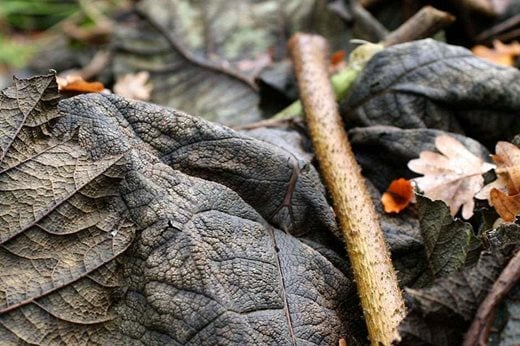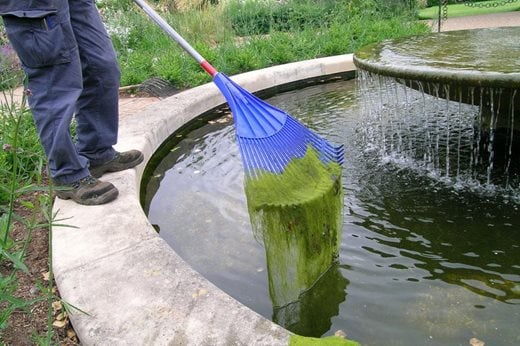Winter protection
 Remove the last of the dead foliage. Tender plants should already have been brought into a frost-free greenhouse for storage in trays of deep mud or damp sand, or even in a bucket of water, until the risk of frost has passed.
Remove the last of the dead foliage. Tender plants should already have been brought into a frost-free greenhouse for storage in trays of deep mud or damp sand, or even in a bucket of water, until the risk of frost has passed.
Give winter protection to Gunnera by cutting off old leaves and placing them over the crown of the plants.
Zantedeschia (arum lilies) are not fully hardy, and can be protected by cutting them back and covering them with a layer of straw or bracken. In cold regions, or with more tender varieties, the plants should be brought into the greenhouse as described above.
General maintenance
 If barley straw bales or pads were used to reduce algae during the summer months, these can now be removed and added to the compost heap. Let them sit by the edge of the pond for 24 hours before composting, so that pond insects can find their way back into the water.
If barley straw bales or pads were used to reduce algae during the summer months, these can now be removed and added to the compost heap. Let them sit by the edge of the pond for 24 hours before composting, so that pond insects can find their way back into the water.
Stop feeding fish once the cold weather sets in.
Rake out fallen leaves or shake off those that have gathered on protective netting.
It is OK to now cut down any grass left long at the edges of the pond as most amphibians will have left the water. Log piles, undisturbed compost heaps or piles of stone covered loosely with soil can act as safe refuges for amphibians in winter.
Troubleshooting
Watch out for hungry herons - they will deplete fish stocks quickly. Nylon strings strung across the edges of the pond (where they often wait for fish) can deter them from approaching the water. They need to be 15cm (6in) from the ground and 15cm in from the edge of the pond.

